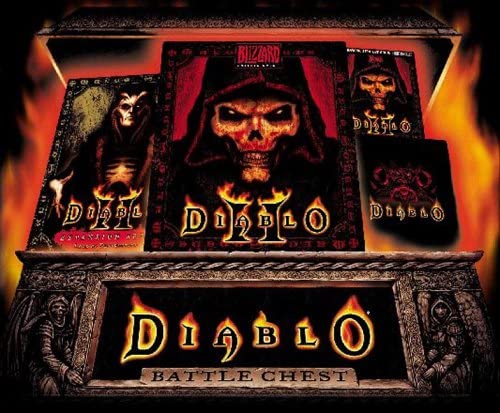Breakpoints are the values at which spells, attacks, hit recovery and other animations become a frame faster or slower. It's essential to know the main breakpoints for your character's attack rate, and knowing all the rest is very useful to wisely plan your equipment.
- Why are there Breakpoints?
Since Diablo II runs at 25 frames per second, events can only occur at discrete numbers of frames. As a result of this, improvements to attack rate, casting speed, hit recovery, and blocking rate is measured by the number of frames required to display the motion. If a normal attack with a given weapon takes 10 frames, some amount of faster attack bonus will drop it down to 9 frames, but until that amount is reached, no improvement will occur. Players call the amounts of improvement necessary to cause a change "breakpoints".
Speeds for all of these properties vary greatly between the different characters and items. Many attack skills have their own speeds and breakpoints. Other skills (such as Fanaticism) modify the overall speed of all attacks.
Values must meet or exceed numbers to achieve that breakpoint. If a breakpoint requires 48% Faster Hit Recovery, you will not get it with 46% or 47%. You must get to 48%, and then anything above that will cause no change until you meet or exceed the next breakpoint.
Increased speeds are displayed by dropping frames of animation. This can result in very fast movements looking choppy. For instance, if a character's basic attack with a given weapon requires 12 frames for the full animation (showing the arm swinging, the weapon descending, the hit landing, and then the weapon being lifted back to the ready pose), and your character has that attack down to 5 frames, thanks to a lot of Increased Attack Speed and a boost from Fanaticism, 7 of the 12 frames of animation will not be shown. The game will only display the weapon at the top, halfway down, hitting, halfway back up, and at rest. Hence it looks choppy. This display issue can not be avoided in a frame-based, 2D game. 3D games do not have this issue, since movements can be shown at any speed -- the refresh rate of your monitor, 3D card, and the game engine permitting.
- Breakpoint Modifiers
Modifiers that use the "breakpoint system" are:
Faster Block Rate (FBR)
Faster Cast Rate (FCR)
Faster Hit Recovery (FHR)
Increased Attack Speed (IAS)
In Diablo II, animation speeds are measured in "frames," as explained above. One frame is 1/25 of a second.
- Faster Block Rate
A character goes into block animation if its opponent succeeds in the hit check and the character succeeds in a blocking check. The character can do nothing else during the blocking animation. Blocking is only possible while engaged in melee combat, or while walking (not while running).
Improvements to faster blocking are difficult to achieve since the bonuses to it are found almost exclusively on shields.
Notes:
- In some cases, the equipped weapon influences the blocking speed.
- The Assassin's Weapon Block skill is also affected by her Faster Block Rate, and the same values as for shield blocking apply.
- Act 3 mercenaries do not block even though they are capable of using a shield.
- Faster Cast Rate
Faster Cast Rate is found on a variety of equipment. This stat is most important for spell-casters, for obvious reasons. All spells are affected by this value but note that some spells have a 1 second, or longer, delay between uses. For those spells, FCR equipment will lower the frames required for the actual casting animation, but the 1-second delay will still run (for 25 frames) after each cast.
For instance, if your character takes 11 frames to cast a spell that has a 1-second delay, that's 11 + 25 = 36 frames per use. If you use FCR equipment to cut your casting frames to 7, you'll still have to wait 7 + 25 = 32 frames to cast it again. Saving 4 frames every time you cast a spell will certainly add up over hundreds of casts, but the difference is less noticeable than it is with spells you can "spam" as quickly as your character can cast them.
Notes:
- Lightning and Chain Lightning have different breakpoints than the other Sorceress spells.
- Faster Hit Recovery
The hit recovery counter is triggered by any hits that take off more than 1/12th of your character's maximum hit points. When this happens your character is knocked into a "hit Stun" animation, which must be completed before you can take another action. Characters (or mercs or monsters) may be stunned repeatedly, trapping them in " Stun lock," a very dangerous situation.
There are also a variety of skills (for players and monsters) that cause the target to be stunned. Other skills and spell effects can cause all hits to Stun while they are in effect.
- Increased Attack Speed
Increased Attack Speed is a coefficient in Diablo II that increases the speed of any melee attack and the Assassin's Martial Arts and Traps abilities. Most IAS caps off around 120-130%. Cast Rate is not affected.
Attack speed mechanics are closely related to frames; the better the IAS, the fewer frames are required to perform an attack. The amount of IAS required to remove one frame from an attack (commonly called "breakpoints) is integral to calculating attack speed; without reaching breakpoints, nominal increases in attack speed do not actually improve attack speed in any way.
Credits:
All information has been taken from https://diablo2.diablowiki.net/Main_Page and https://diablo.fandom.com/wiki/Diablo_Wiki


Stormlash
368Moderator